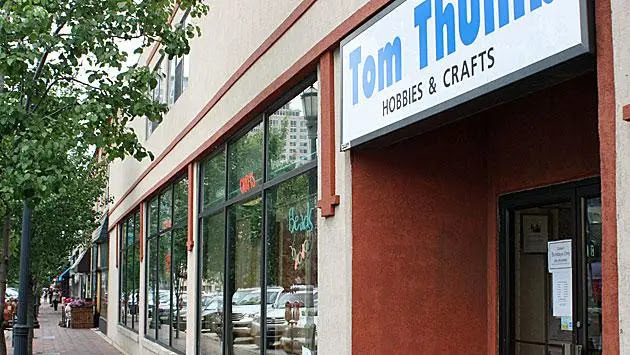 |
| Small Alewive (Herrings) Quickly Grow to Maturity. |
Thursday, April 4, 2024
What Happened to all the Alewives in Lake Michigan?
Saturday, February 24, 2024
Elias Kent Kane was a key figure in the constitutional convention that drafted Illinois' constitution in 1818.
Elias Kent Kane left a lasting mark on the state of Illinois. Born in New York City in 1794, Kane pursued a legal education at Yale University. Shortly after graduating, he ventured west, finding himself in Nashville, Tennessee, for a brief period before moving on to Kaskaskia, then the capital of the Illinois Territory, in 1814. Kane's arrival proved fortuitous as he was quickly elevated to a territorial judge position, marking the beginning of an influential political career.
As Illinois moved toward statehood in 1818, Kane was a central delegate to the state's constitutional convention. He became a key figure in shaping the state's fundamental laws and earned the nickname "Father of the Illinois Constitution." In the same year, Kane was appointed Illinois' first Secretary of State. Ever ambitious, Kane won election to the United States Senate in 1824, serving as a Democratic senator until his untimely death in 1835.
 |
| Elias Kent Kane is buried in Evergreen Cemetery, at 501 West Holmes Street, Chester, Illinois, in the Kane family plot. The cenotaph[1] monument is located at the Congressional Cemetery at 1801 East Street SE, Washington, D.C., which was erected in Kane's honor because he died while serving in office as a United States Senator from Illinois. |
Born: June 7, 1794, New York City
Education: Graduated from Yale College in 1813
Initial Career: Briefly practiced law in Nashville, Tennessee, before moving to Kaskaskia, Illinois Territory in 1814. He was appointed as a territorial judge almost immediately.
Move to Illinois: Relocated to Kaskaskia, Illinois Territory in 1814 and was quickly appointed a territorial judge.
Constitutional Convention: A pivotal delegate to the 1818 convention that drafted the Illinois State Constitution.First Secretary of State: Kane held the first-ever position as Secretary of State of Illinois from 1818 to 1824.U.S. Senate: Elected to the U.S. Senate in 1824, serving from 1825 until he died in 1835. He was reelected in 1831.First Secretary of State (1818-1824): Kane held the first-ever position as Secretary of State of Illinois.U.S. Senator (1825-1835): Elected as a Democratic-Republican (later Jacksonian Democrat) to the U.S. Senate, where he served for two terms.
Democratic Party: A member of the Jacksonian Democratic Party.Advocate of Internal Improvements: Kane championed infrastructure development in Illinois, supporting projects like the Illinois and Michigan Canal.Land Policy: Played a significant role in shaping land policy in Illinois.Kane County: Though he never lived within its borders, Kane County, Illinois, was named in his honor in 1836.Jacksonian Democrat: Kane was a strong supporter of President Andrew Jackson.Advocate of Internal Improvements: Kane championed infrastructure development in Illinois, supporting projects like the Illinois and Michigan Canal.Controversial Figure: His political alliances and dealings made him a somewhat controversial figure. Some historians argue he used his positions for personal and political gain.
Died: December 12, 1835, in Washington, D.C., at age 41.Burial: Initially interred in a family cemetery, then reinterred at Evergreen Cemetery, Chester, Illinois.Kane County, Illinois: The county is named in his honor.
Tuesday, January 23, 2024
Slot Car Racing Was a Popular Craze in Chicagoland in the 1960s and 70s.
Friday, November 17, 2023
The History of Chicago's Treasure Island Grocery Store Chain.
 |
| Treasure Island's first store at 1639 North Wells Street, Chicago |
- 1963: The Treasure Island brand was founded by Christ Kamberos.
- 1964: The first store on Wells Street opens.
- 1980s-2010s: The Treasure Island chain expands to over 20 stores in the Chicago area.
- 2009: Christ Kamberos died.
- 2018: The Treasure Island chain files for bankruptcy, closing all its stores.
- 2019: The Wells Street store location was sold to a real estate developer.
Thursday, November 2, 2023
The Great Kiss-Off at Woodfield Mall, Schaumburg, Illinois. 1974
Tuesday, August 8, 2023
World's First Nuclear Reactor at the University of Chicago.
Site A is about 20 acres in size and contains the buried remains of Chicago Pile-1.Plot M is 150x140 foot (21K sq. ft.) area that is the radioactive waste dumpsite.
 |
| "World's First Nuclear Reactor," followed by a summarized history of Argonne. Photo: Forest Preserves of Cook County, IL. |
Saturday, July 22, 2023
Schiller Woods Forest Preserve Magic Water Pump on Irving Park Road, Particulars.
Wednesday, July 19, 2023
Harlem Irving Plaza, 4104 North Harlem Avenue, Norridge, Illinois, opened in 1956─
 |
| The new Wieboldt's store in the Harlem Irving Plaza shopping center in Norridge circa 1957. The store was air-conditioned. |
_BJ_and_Dirty_Dragon_05-16-1970_05.jpg) |
| BJ (Bill Jackson) and Dirty Dragon at Harlem Irving Plaza, May 16, 1970. |
- BJ (Bill Jackson) and Dirty Dragon at Harlem Irving Plaza, May 16, 1970.
- Bozo at Harlem Irving Plaza, September 9, 1970.
- Free Circus at Harlem Irving Plaza in the 1970s.
- BJ (Bill Jackson) and Dirty Dragon at Harlem Irving Plaza, October 1973.
Thursday, July 13, 2023
Brementowne Mall, Tinley Park, Illinois. (1973-1999)
Wednesday, July 12, 2023
Algonquin Commons, Algonquin, Illinois. (2004─)
Sunday, July 9, 2023
Robert Todd Lincoln saving President Lincoln's papers after the Chicago Fire in 1871.
 |
| The ruins of the Marine Bank Building (built 1857) at 154 Lake Street just after the 1871 Chicago Fire. Robert Lincoln's law office was located in the building. |


























